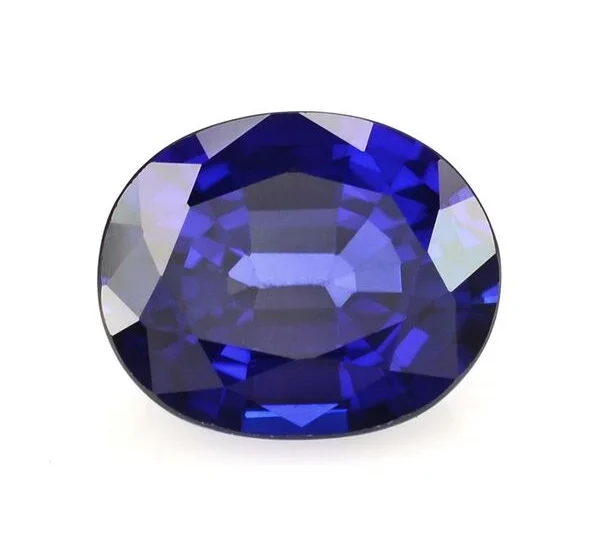What Are Lab Grown Gemstones?
Lab-grown gemstones, also known as synthetic or man-made gems, are real gemstones that are created in a laboratory setting rather than being mined from the earth. These gemstones are chemically, physically, and optically identical to their natural counterparts. The process of creating lab-grown gems involves replicating the natural conditions that lead to the formation of gems, such as heat, pressure, and chemical composition. In recent years, lab-grown gemstones have gained immense popularity due to their ethical production and environmental benefits.
But what exactly makes lab-grown gemstones so special? The key difference between them and natural gemstones lies in their origin. Lab-grown gems are created using advanced technology, whereas natural gemstones are extracted from the Earth. This distinction makes lab-grown gems an appealing option for consumers looking for sustainable, eco-friendly, and ethically sourced jewelry.
Why Are Lab Grown Gems Considered a Sustainable Option?
Sustainability has become an essential factor for many consumers when making purchasing decisions, especially when it comes to luxury items like gemstones. Lab-grown gems are considered a sustainable option for several reasons.
First, the process of mining natural gemstones can be harmful to the environment. Mining operations often involve large-scale excavation, which can result in deforestation, loss of biodiversity, and soil erosion. Furthermore, mining can lead to water contamination due to the chemicals used in the process. In contrast, lab-grown gems are created using renewable energy sources and do not contribute to the environmental damage associated with traditional mining methods.
Another significant advantage of lab-grown gemstones is their ethical production. Many gemstones are mined in regions where labor practices are questionable, and workers may be exposed to unsafe working conditions. With lab-grown gems, the entire production process is controlled in a laboratory, ensuring fair labor practices and reducing the risk of exploitation.
Moreover, lab-grown gemstones often have a smaller carbon footprint compared to their mined counterparts. The energy used to create these gems can be sourced from renewable sources, and the overall environmental impact of lab-grown gemstones is typically much lower than that of mined gemstones. This makes them an ideal choice for eco-conscious consumers.
What Are the Benefits of Choosing Lab Grown Gems Over Mined Stones?
When it comes to choosing gemstones for jewelry, many buyers are increasingly opting for lab-grown gems over their mined counterparts due to several key benefits.
- Cost-Effectiveness
One of the main reasons people choose lab-grown gems is that they are generally more affordable than natural gemstones. The lower cost of production, coupled with the absence of the need for mining, makes lab-grown gems significantly cheaper. This affordability allows consumers to purchase larger or higher-quality stones at a fraction of the cost of mined gemstones. - Ethical Considerations
As previously mentioned, lab-grown gems are free from the ethical issues associated with gemstone mining. Many gemstones are mined in areas where human rights violations and child labor are prevalent. Choosing lab-grown gemstones ensures that your purchase does not contribute to these unethical practices, making them a more responsible choice for consumers who prioritize ethical shopping. - No Environmental Impact
Unlike mined gemstones, which require destructive extraction methods, lab-grown gems are created in controlled laboratory environments. The process is clean, efficient, and does not contribute to the environmental degradation associated with mining. As a result, choosing lab-grown gemstones is a way to reduce your environmental impact and support sustainable practices. - High Quality and Consistency
Lab-grown gemstones are created under controlled conditions, ensuring a level of consistency and quality that is often difficult to achieve with natural stones. Natural gemstones can have inclusions, color variations, or imperfections that affect their overall appearance and value. Lab-grown gems, on the other hand, can be produced with precision, resulting in stones that are often clearer, more vibrant, and free from flaws.
How Are Lab Grown Gemstones Made?
Lab-grown gemstones are created using two primary methods: High Pressure High Temperature (HPHT) and Chemical Vapor Deposition (CVD).
- High Pressure High Temperature (HPHT): This method involves replicating the extreme conditions found deep within the Earth’s crust. Carbon is subjected to high pressure and temperature to form a diamond or other gemstone. The process is similar to the natural formation of diamonds, but it occurs in a controlled environment.
- Chemical Vapor Deposition (CVD): CVD is a process in which gases are heated in a vacuum chamber, causing them to break down and deposit carbon onto a substrate. This carbon eventually forms a diamond or gemstone crystal. CVD is commonly used to create diamonds but can also be used for other types of lab-grown gems.
Both methods allow for the creation of gemstones that are indistinguishable from natural gems in terms of their appearance, chemical composition, and physical properties.
What Types of Lab Grown Gemstones Are Available?
Lab-grown gemstones come in a variety of types, including diamonds, sapphires, rubies, emeralds, and many others. These gems are created in laboratories using advanced technologies, and their quality is often comparable to that of mined stones.
- Lab Grown Diamonds: One of the most popular types of lab-grown gemstones, lab-grown diamonds are chemically identical to natural diamonds. They are produced using either the HPHT or CVD methods and are available in a range of colors, sizes, and shapes.
- Lab Grown Sapphires: Lab-grown sapphires are created using the same techniques as natural sapphires, resulting in beautiful, high-quality stones. These gemstones come in various colors, including blue, pink, and yellow.
- Lab Grown Rubies: Rubies, like sapphires, are also created using synthetic processes. Lab-grown rubies are often used in fine jewelry and are prized for their deep red color and durability.
- Lab Grown Emeralds: Although emeralds are typically more challenging to grow in a lab, advancements in technology have made it possible to create high-quality emeralds in controlled environments. These emeralds have the same vibrant green color as natural emeralds.
Are Lab Grown Gems as Valuable as Natural Gemstones?
Lab-grown gems are often considered just as valuable as natural gemstones, especially in terms of their appearance and quality. However, their value can differ depending on the market. Since lab-grown gems are created in a laboratory and are not as rare as mined gemstones, they typically have a lower market value.
While they may not hold the same long-term investment potential as natural stones, lab-grown gems are still prized for their beauty, quality, and ethical production. Many consumers choose lab-grown gems for their affordability and sustainability, and the market for these stones is expected to continue growing as more people become aware of the benefits of choosing lab-grown over mined gems.
Conclusion: Are Lab Grown Gemstones the Future?
As the demand for sustainable and ethically sourced products increases, lab-grown gemstones are poised to play a major role in the future of the jewelry industry. These gems offer numerous benefits, including affordability, ethical production, and a minimal environmental impact. As technology continues to advance, lab-grown gemstones will likely become an even more popular choice for consumers looking for high-quality, sustainable options.
In conclusion, lab-grown gemstones represent a future where beauty and sustainability go hand in hand. By choosing lab-grown gems, consumers can enjoy luxurious, high-quality jewelry while making a positive impact on the environment and society. As awareness of the benefits of lab-grown gems continues to spread, it is clear that these stones are not just a passing trend but the future of the jewelry industry.




The Magic of 925 Silver and Natural Gemstones in Handmade Designs - Fastpanda 24 Apr 2025
[…] a quiet but powerful beauty in 925 silver and natural gemstones, especially when shaped by human hands. These materials connect us to the Earth, to spirit, and to […]